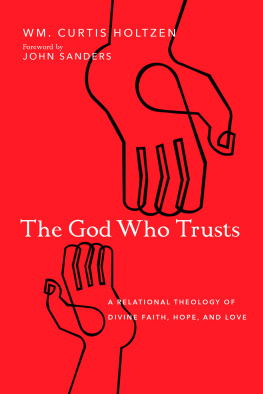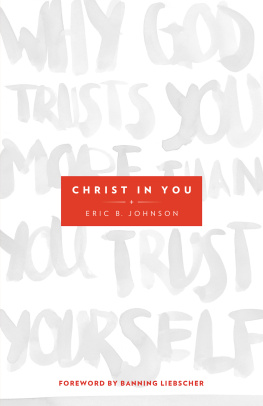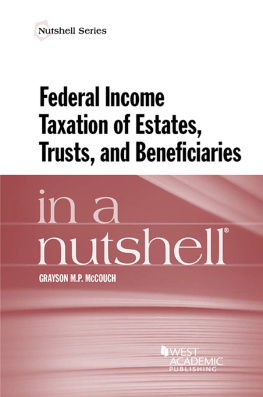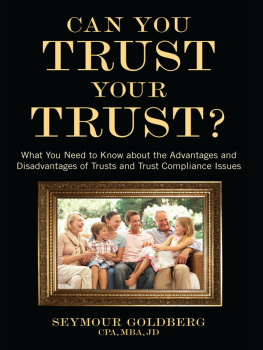CLARENDON LAW SERIES
Edited by
PAUL CRAIG
CLARENDON LAW SERIES
Discrimination Law (2nd edition)
SANDRA FREDMAN
Natural Law and Natural Rights (2nd edition)
JOHN FINNIS
Introduction to Company Law (2nd edition)
PAUL DAVIES
Employment Law (2nd edition)
HUGH COLLINS
The Conflict of Laws (2nd edition)
ADRIAN BRIGGS
International Law
VAUGHAN LOWE
Civil Liberties
CONOR GEARTY
Intellectual Property
MICHAEL SPENCE
Policies and Perceptions of Insurance Law in the Twenty-First Century (2nd edition)
MALCOLM CLARKE
Philosophy of Private Law
WILLIAM LUCY
Land Law
ELIZABETH COOKE
Law in Modern Society
DENIS GALLIGAN
An Introduction to Tort Law (2nd edition)
TONY WEIR
Equity (2nd edition)
SARAH WORTHINGTON
Atiyahs Introduction to the Law of Contract (6th edition)
STEPHEN A. SMITH
Unjust Enrichment (2nd edition)
PETER BIRKS
An Introduction to Family Law (2nd edition)
GILLIAN DOUGLAS
Criminal Justice
LUCIA ZEDNER
Contract Theory
STEPHEN A. SMITH
Public Law
ADAM TOMKINS
Personal Property Law (3rd edition)
MICHAEL BRIDGE
Law of Property (3rd edition)
F.H. LAWSON AND BERNARD RUDDEN
An Introduction to Constitutional Law
ERIC BARENDT
Resulting Trusts
ROBERT CHAMBERS
The Concept of Law (2nd edition)
H.L.A. HART
Legal Reasoning and Legal Theory
NEIL MACCORMICK
Labour Legislation and Public Policy
PAUL DAVIES AND MARK FREEDLAND
Playing by the Rules
FREDERICK SCHAUER
Precedent in English Law (4th edition)
RUPERT CROSS AND J.W. HARRIS
Public Law and Democracy in the United Kingdom and the United States of America
P.P. CRAIG
Conflicts of Law and Morality
KENT GREENAWALT
An Introduction to Roman Law
BARRY NICHOLAS AND ERNEST METZGER
AN INTRODUCTION TO THE LAW OF TRUSTS
THIRD EDITION
SIMON GARDNER
BCL (Oxford) MA (Oxford)
Fellow of Lincoln College Oxford
Faculty of Law, University of Oxford


Great Clarendon Street, Oxford OX2 6DP
Oxford University Press is a department of the University of Oxford.
It furthers the Universitys objective of excellence in research, scholarship,
and education by publishing worldwide in
Oxford New York
Auckland Cape Town Dar es Salaam Hong Kong Karachi
Kuala Lumpur Madrid Melbourne Mexico City Nairobi
New Delhi Shanghai Taipei Toronto
With offices in
Argentina Austria Brazil Chile Czech Republic France Greece
Guatemala Hungary Italy Japan Poland Portugal Singapore
South Korea Switzerland Thailand Turkey Ukraine Vietnam
Oxford is a registered trade mark of Oxford University Press
in the UK and in certain other countries
Published in the United States
by Oxford University Press Inc., New York
Simon Gardner 2011
The moral rights of the author have been asserted
Database right Oxford University Press (maker)
Crown copyright material is reproduced under Class Licence
Number C01P0000148 with the permission of OPSI
and the Queens Printer for Scotland
First published 1990
Third edition published 2011
All rights reserved. No part of this publication may be reproduced,
stored in a retrieval system, or transmitted, in any form or by any means,
without the prior permission in writing of Oxford University Press,
or as expressly permitted by law, or under terms agreed with the appropriate
reprographics rights organization. Enquiries concerning reproduction
outside the scope of the above should be sent to the Rights Department,
Oxford University Press, at the address above
You must not circulate this book in any other binding or cover
and you must impose the same condition on any acquirer
British Library Cataloguing in Publication Data
Data available
Library of Congress Cataloging in Publication Data
Library of Congress Control Number: 2011924933
Typeset by Newgen Imaging Systems (P) Ltd., Chennai, India
Printed in Great Britain
on acid-free paper by
Clays Ltd, St Ives plc
ISBN 9780199545742
ISBN 9780199545759 (Pbk.)
1 3 5 7 9 10 8 6 4 2
Preface
The previous edition of this book appeared in 2003. Since then, the law has moved on somewhat, maybe the most significant change being the advent of the Charities Act 2006, together with judicial revision of the rules regarding family homes. Academic endeavour too has continued, perhaps the most striking new work being that concerning the duty to account and its significance. And my own thoughts, and ideas about expressing everything, have evolved as well. This new edition aims to convey such developments.
Just as the previous edition was more detailed and subtler than its predecessor, moreover, this one in turn offers rather greater substance, and a more overtly scholarly style. Much of this change consists in the provision of more extensive footnotes. But even where the text too has become fuller (as it has especially in the treatment of remedies and of remedial constructive trusts), I hope that it will continue to offer an accessible and stimulating treatment of the subject. It is aimed above all at undergraduates studying Trusts as part of their law degree. Although it can valuably be read before embarking on an in-depth study of Trusts, it is probably best used alongside or after such study. I hope it will help undergraduates understand the subject better, both by the reflections it makes on the material they are studying and, perhaps more importantly, by encouraging them to develop such reflections for themselves. Other readers too may find that it serves their needs, especially those looking for a brief account of this area of the law, explained in terms that may strike chords with other fields of interest.
To help in the exposition of the material, I have divided some otherwise over-long chapters: those previously covering both remedies against trustees and the position of third parties; resulting trusts and the principles behind constructive trusts; and various instances of constructive trusts. I have also moved all the material on resulting and constructive trusts to the end of the book, where it can take advantage of a now earlier discussion of account liability, this being an arguably influential factor in shaping a number of kinds of constructive trust.
The text was finalized at the end of November 2010. At this point, certain further developments were nonetheless anticipated. Readers should be on the alert for these. In particular, we expect, in the winter of 201011, a decision of the Court of Appeal about the rule in Re Hastings-Bass (Pitt Holt, Futter Futtercases reaching the court as a result of the Revenue having belatedly interested itself in this issue); and in the spring or early summer of 2011, decisions of the Supreme Court regarding family home constructive trusts (Jones Kernott), and the nature of a beneficiarys interest (Colour Quest Ltd Total Downstream UK Plcthis being litigation over the fire at the Buncefield oil depot, a rather improbable vehicle for raising the topic). There is also the question whether s 199 of the Equality Act 2010, abolishing the presumption of advancement, will be brought into force, something about which I could obtain no information from the Ministry of Justice at the time of writing.
Once again I must, and gratefully do, acknowledge the help that others have been generous enough to give me. Much of this has been in the background, but it is not the less appreciated for that. In a specifically academic vein, I have received it above all from Michael Ashdown, Mindy Chen-Wishart, Elizabeth Cooke, Kate Davidson, Anne Davies, Joshua Getzler, Jonathan Herring, Mike Macnair, Christopher McCrudden, Charles Mitchell, Jenny Payne, Lionel Smith, Margaret Stevens, and Bill Swadling. The publishers have once again been most supportive.
Next page












